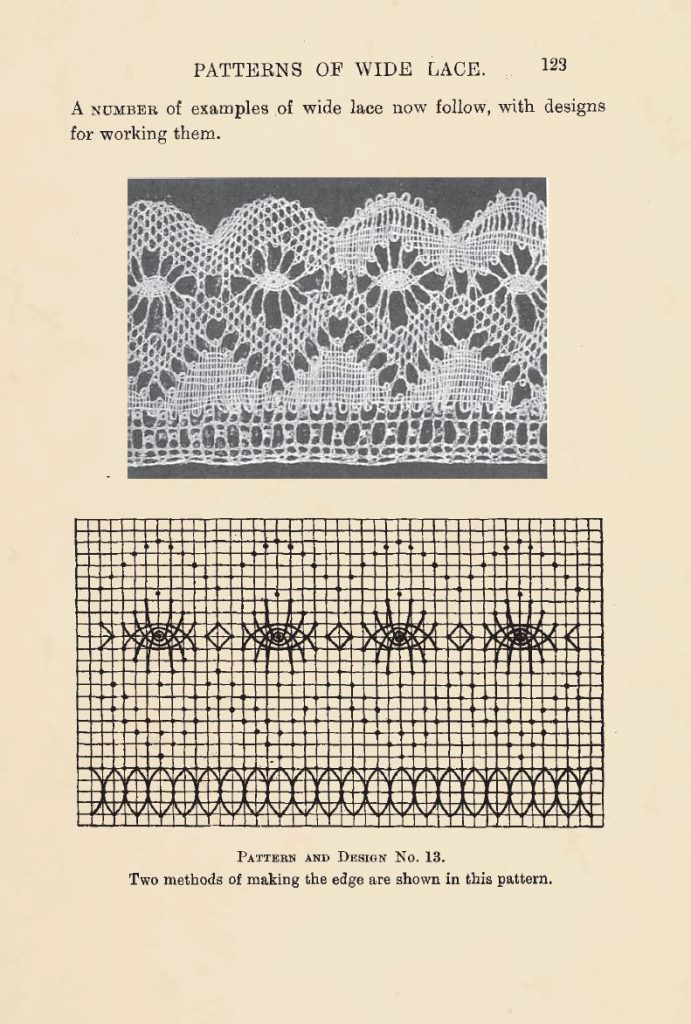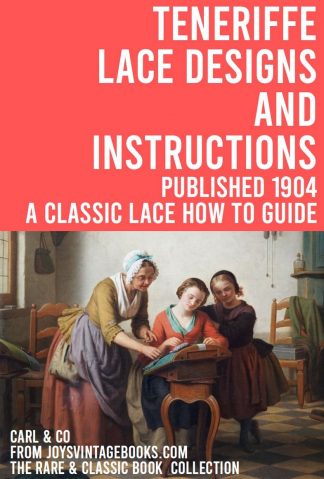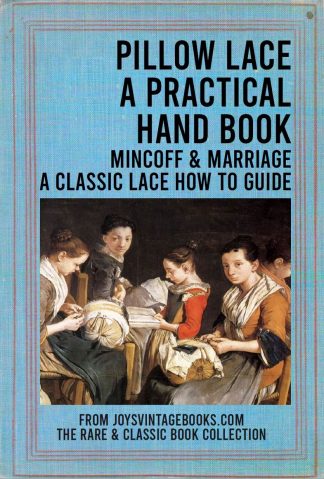Torchon Lace is a type of bobbin lace that originated in Europe in the 17th century. It is characterized by its geometric designs and simple, repetitive stitches, which give it a timeless and elegant look. Torchon Lace is a versatile craft that can be used to create a wide variety of projects, from delicate doilies and table runners to intricate lace collars and cuffs.
One of the reasons I love Torchon Lacemaking so much is because it is both relaxing and challenging at the same time. There is something meditative about working with bobbins and threads, and seeing a pattern come together stitch by stitch is incredibly rewarding. At the same time, Torchon Lacemaking requires a great deal of concentration and attention to detail, which keeps your mind sharp and engaged.
In this guide, I will take you through everything you need to know to get started with Torchon Lacemaking. We will start with a brief history of the craft, before moving on to the materials you will need to get started. From there, we will explore the techniques used in Torchon Lace, the different patterns and designs you can create, and some advanced projects to challenge yourself with. Finally, I will share some tips and tricks I have learned over the years to help you avoid common mistakes and improve your skills.
So, whether you are a complete beginner or an experienced lacemaker looking to take your skills to the next level, I hope this guide will inspire and inform you as you embark on your Torchon Lace journey. Let’s get started!
-
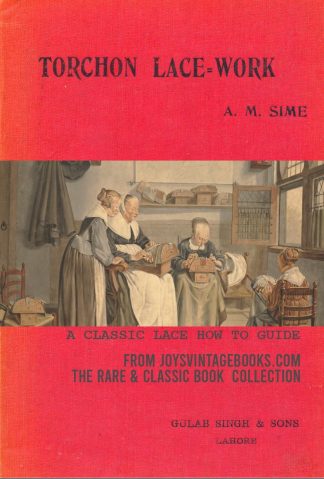 Torchon Lace Work Part 1 and Part 2 Published 1904: Lace Making Book eBook Instant Download$2.99
Torchon Lace Work Part 1 and Part 2 Published 1904: Lace Making Book eBook Instant Download$2.99 -
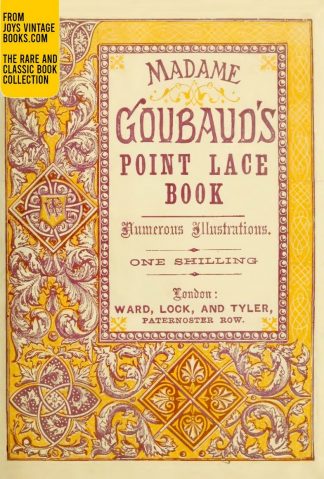 Madame Goubaud’s Point Lace Book : Instructions and Patterns Lace Making Book eBook Instant Download$2.99
Madame Goubaud’s Point Lace Book : Instructions and Patterns Lace Making Book eBook Instant Download$2.99 -
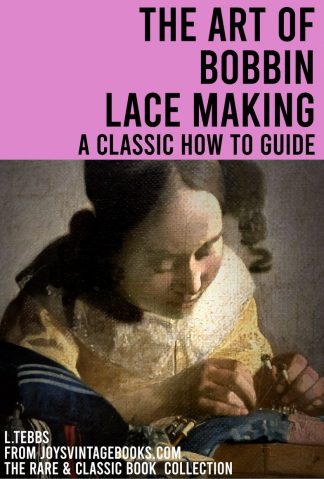 The Art of Bobbin Lace Making by Louisa A. Tebbs c.1911 – Lace Making Instruction Book eBook Instant Download$2.99
The Art of Bobbin Lace Making by Louisa A. Tebbs c.1911 – Lace Making Instruction Book eBook Instant Download$2.99
The History of Torchon Lace
Torchon Lace has a rich and fascinating history that spans centuries and continents. The craft originated in Europe in the 17th century, and quickly became popular among the upper classes as a way to embellish clothing and home decor items. Torchon Lace was also used in the church, where it adorned altar cloths, vestments, and other ceremonial items.
As the popularity of Torchon Lace spread, it began to be produced in large quantities in industrial settings. However, this mass-produced lace lacked the delicacy and intricacy of handcrafted Torchon Lace, and the craft began to decline in popularity.
Fortunately, the Torchon Lace revival of the 20th century brought the craft back to life. Today, Torchon Lace is practiced by lacemakers all over the world, who appreciate its beauty and versatility.
As a passionate Torchon Lacemaker, I am inspired by the long and rich history of this craft. Each piece of Torchon Lace tells a story, and I feel privileged to be a part of that story every time I create a new project.
In the next section, we will explore the materials you will need to get started with Torchon Lacemaking.
Materials Required for Torchon Lacemaking
To get started with Torchon Lacemaking, you will need a few basic materials. Here are the key items you will need:
- Bobbins – These are the small wooden or plastic spools that hold the thread. You will need several bobbins to create your lace. I recommend starting with at least 12, although more experienced lacemakers may use upwards of 50 or more.
- Threads – Torchon Lace can be made using a variety of threads, including cotton, linen, and silk. The most common thread used is cotton, as it is affordable, easy to work with, and comes in a wide range of colors. Choose a thread that is appropriate for the type of lace you want to create and the size of your bobbins.
- Pillows – The pillow is the surface on which you will create your lace. It can be a specialized lace pillow or a regular pillow with a lace cover. Make sure your pillow is sturdy and has a good amount of give, so you can maintain tension on your lace.
- Pins and other tools – You will need a variety of pins to hold your lace in place as you work. T-pins are commonly used, as they are easy to insert and remove. You may also need other tools, such as a bobbin winder, a pair of scissors, and a crochet hook for finishing your lace.
- Types of fabrics for Torchon Lace – Torchon Lace can be worked on a variety of fabrics, including cotton, linen, and silk. It is important to choose a fabric that is suitable for your project and your thread. Some fabrics may be too stiff or too slippery to work with, so experiment with different types to find the one that works best for you.
As an experienced Torchon Lacemaker, I have found that investing in high-quality materials is essential for producing beautiful and long-lasting lace. While it may be tempting to cut corners and use cheaper materials, you will likely end up with inferior results.
In the next section, we will explore the techniques used in Torchon Lace, which are the building blocks of this beautiful craft.
Techniques Used in Torchon Lace
Torchon Lace is made using a combination of simple stitches, which are repeated to create intricate patterns and designs. Here are some of the key techniques used in Torchon Lace:
- The Torchon Ground – This is the foundation stitch used in Torchon Lace. It is made by twisting pairs of threads together to create a braided effect. The Torchon Ground stitch is repeated throughout the lace to create a grid pattern.
- Plaits – Plaits are made by twisting three or more threads together. They can be used to create diagonal lines or decorative elements in the lace.
- Half-stitch – The Half-stitch is a basic stitch used in Torchon Lace. It is made by wrapping a single thread around a pair of threads and then crossing the two pairs over each other. The Half-stitch is used to create picots, which are decorative loops in the lace.
- Whole-stitch – The Whole-stitch is another basic stitch used in Torchon Lace. It is made by wrapping a pair of threads around another pair of threads and then crossing the two pairs over each other. The Whole-stitch is used to create the diamond-shaped elements in the lace.
- Tallies – Tallies are long, vertical stitches that are used to create straight lines or decorative elements in the lace.
These are just a few of the many techniques used in Torchon Lace. As you become more experienced, you may want to experiment with different combinations of stitches and patterns to create your own unique designs.
One of the things I love about Torchon Lace is the way that simple stitches can be combined in endless ways to create intricate and beautiful patterns. Each new project is a chance to explore new techniques and push the boundaries of what is possible with this craft.

Techniques Used in Torchon Lace
Torchon Lace is made using a combination of simple stitches, which are repeated to create intricate patterns and designs. Here are some of the key techniques used in Torchon Lace:
- The Torchon Ground – This is the foundation stitch used in Torchon Lace. It is made by twisting pairs of threads together to create a braided effect. The Torchon Ground stitch is repeated throughout the lace to create a grid pattern.
- Plaits – Plaits are made by twisting three or more threads together. They can be used to create diagonal lines or decorative elements in the lace.
- Half-stitch – The Half-stitch is a basic stitch used in Torchon Lace. It is made by wrapping a single thread around a pair of threads and then crossing the two pairs over each other. The Half-stitch is used to create picots, which are decorative loops in the lace.
- Whole-stitch – The Whole-stitch is another basic stitch used in Torchon Lace. It is made by wrapping a pair of threads around another pair of threads and then crossing the two pairs over each other. The Whole-stitch is used to create the diamond-shaped elements in the lace.
- Tallies – Tallies are long, vertical stitches that are used to create straight lines or decorative elements in the lace.
These are just a few of the many techniques used in Torchon Lace. As you become more experienced, you may want to experiment with different combinations of stitches and patterns to create your own unique designs.
One of the things I love about Torchon Lace is the way that simple stitches can be combined in endless ways to create intricate and beautiful patterns. Each new project is a chance to explore new techniques and push the boundaries of what is possible with this craft.

Patterns and Designs in Torchon Lace
Torchon Lace is known for its simple, geometric designs, which are created using a combination of the techniques we explored in the previous section. Here are some of the most popular patterns and designs in Torchon Lace:
- Diamonds – Diamonds are a classic design element in Torchon Lace. They are created using a combination of Whole-stitches and Half-stitches to create a diamond-shaped motif. Diamonds can be arranged in a grid pattern to create a larger design.
- Rings – Rings are another popular design element in Torchon Lace. They are created using Tallies, Plaits, and Half-stitches to create a circular motif. Rings can be arranged in a grid pattern or scattered throughout the lace to create a more organic design.
- Leaves – Leaves are a beautiful and versatile design element in Torchon Lace. They are created using a combination of Plaits and Tallies to create a leaf-shaped motif. Leaves can be arranged in a variety of patterns, from a simple border to a more complex, layered design.
- Fans – Fans are a more advanced design element in Torchon Lace. They are created using a combination of Tallies, Plaits, and Half-stitches to create a fan-shaped motif. Fans can be arranged in a variety of patterns, from a single fan in the center of the lace to a more complex, layered design.
- Edgings – Torchon Lace is often used to create beautiful edgings on clothing, linens, and other items. Edgings can be created using a variety of patterns, from simple diamonds or rings to more complex, multi-layered designs.
These are just a few of the many patterns and designs that can be created using Torchon Lace. As you become more experienced, you may want to experiment with different combinations of stitches and motifs to create your own unique designs.
In my experience, one of the joys of Torchon Lace is the endless variety of patterns and designs that can be created using simple techniques. Each new project is an opportunity to explore new possibilities and create something beautiful and unique.
To Conclude
Torchon Lace is a beautiful and rewarding craft that has been enjoyed for centuries. Whether you are a beginner or an experienced lacemaker, there is always something new to discover in Torchon Lace.
In this article, we have explored the history of Torchon Lace, the materials required for lacemaking, the techniques used to create Torchon Lace, and some of the most popular patterns and designs.
If you are interested in trying your hand at Torchon Lace, I encourage you to start with a simple project and work your way up to more complex designs. With practice and patience, you can create beautiful and intricate lace that will be treasured for generations to come.
